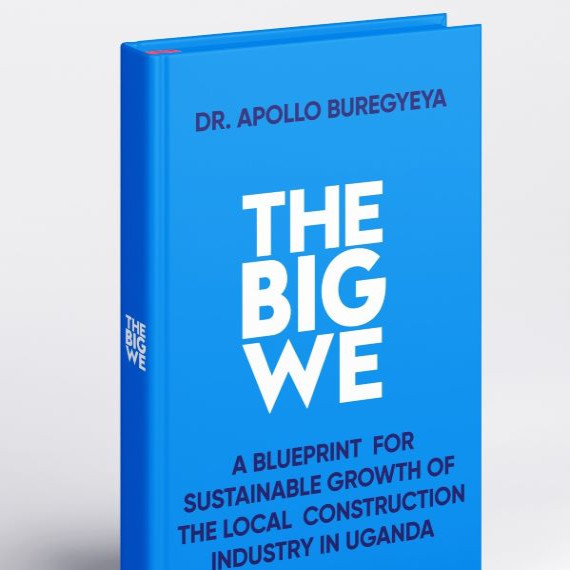Get Up to 10% OFF on Pre-Orders
CALL US NOW+256 393 240 090

The BIG WE - A blueprint for Sustainable Growth of the Local Construction Industry in Uganda
Finally, a book about us. As in, it’s we, you and I, Africans, the big us. How do we all become aware of what we need to do in order to build a better society for ourselves and our children? I’ve provided some answers for the construction industry sector. It’s like we are all in the construction industry. In fact, the biggest investment you’ll ever make will be related to construction. A simple house, or a multilevel commercial building similar to the ones constructed by Eco Concrete Ltd. Makes sense. All your life’s earnings will be directed towards construction. In fact, 40% of the global GDP goes into construction. We are that big. The BIG WE. You see yourself? Now click that ORDER YOUR COPY TODAY button and order for a copy of the BIG WE and get more eloquent when analyzing the construction industry in Uganda and the greater sub-Saharan Africa.
The “Big We” is as
interesting as its title. Dr. Apollo
Buregyeya has come up with not only a unique title but also a comprehensive
analysis of the prevailing difficulties associated with local contractors in
Uganda. This is after his innovation
when he founded Eco Concrete Ltd, a local Ugandan construction company with
interests in iron ore, natural pozzolana and kaolin mining, production of green
cement and cement-based construction materials, civil engineering works and
real estate development. In this book, he shares his experiences as a Ugandan
local contractor and the challenges associated with it.
In this book,
students and practitioners of civil engineering and related disciplines will
find a great companion giving a historical perspective of the construction of
structures. Special reference has been
given to the history of construction of structures in Uganda. The reader will find it interesting to learn
how words like Kolasi, referring to tarmac roads, became part of the
local vocabulary after the European-owned contractors COLAS Construction
Company executed the contracts for all the first major paved road projects in
Uganda during the 1940s and the 1950s.
Ugandan companies that gained prominence in subsequent decades are also
given due coverage.
Dr. Buregyeya points
out the favours enjoyed by foreign contractors owing to their financial
muscle. Cunningly, however, they use
local contractors as subcontractors to fund these projects – a total
contradiction of what the procurement processes set out to achieve. In short, foreign companies have huge bank
balances to convince the local procurement entities to give them contracts but
use funds of the local contractors to execute their contracts! This is one of the important contradictions
the author presents to the reader. The
author then proposes ways by which local Ugandan contractors can thrive against
all the highlighted odds. The Uganda
National Association of Building and Civil Engineering Contractors (UNABCEC)
with a membership of up to 422 contractors and an agreed classification system
is proposed as the most reliable rallying point of Ugandan construction
companies with long-term vision.
Among the flaws
pointed out is the use of foreign standards/codes of practice to design
infrastructure in the country yet the local conditions, including soils and
environmental factors, differ significantly from those in Britain or Europe
whose standards/codes of practice are used in Uganda. This, according to the author, explains why
Ugandan infrastructure, such as roads, deteriorate beyond expectations after
they have been designed following foreign standards/codes of practice. Lack of strict enforcement, rampant
corruption and lack of skilled labour have been pointed out as some of the
causes of poor infrastructure quality in Uganda. The author proposes measures that can help
raise the quality of infrastructure in the country. Flaws in the formal education system that
lead to production of graduates lacking skills are pointed out.
Each chapter is
approached in such a way that it builds from the previous ones, making the book
very interesting. I find the “Big We” an
excellent companion for students, lecturers and practitioners of construction
in Uganda. I am sure other readers will
find it very interesting.
Foreword by:
Moses Nduhira Twesigye-omwe (PhD),
Associate Professor of Civil Engineering, Kabale University, Uganda